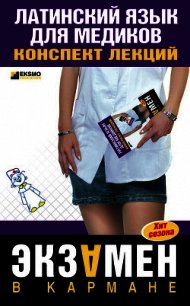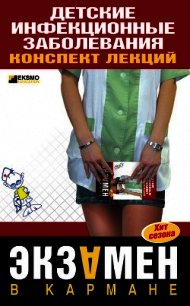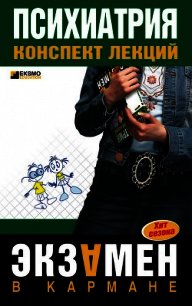Английский язык для медиков: конспект лекций - Беликова Елена (книги хорошем качестве бесплатно без регистрации .txt) 📗
New words
oral cavity – полость рта
forms – формы
embryo – эмбрион
in-pocketing – в присваивании
functionally – функционально
mouth – рот
special – особенный
structures – структуры
associated – связанный
humans – люди
margins – края
lips – губы
mark – марка
junction – соединение
hard – трудно
merges – слияния
distensible – растяжимый
cheeks – щеки
principally – преимущественно
tongue – язык
taste – вкус
to assists – помогать
chewing – жевание
swallowing – глотание
speaking – разговор
limit – предел
Спряжение глагола to be (быть) в Future Simple Tense
(Future Indefinite Tense) Таблица 7

Вставьте глагол to be в Present, Past или Future Simple.
1. My father… a teacher.
2. He… a pupil twenty years ago.
3. I… a doctor when I grow up.
4. My sister… not… at home tomorrow.
5. She… at school tomorrow.
6… you… at home tomorrow?
7… your father at work yesterday?
8. My sister… ill last week.
9. She… not ill now.
10. Yesterday we… at the theatre.
11. Where… your mother now? – She… in the kitchen.
12. Where… you yesterday? – I… at the cinema.
13. When I come home tomorrow, all my family… at home.
14… your little sister in bed now? – Yes, she…
15… you little… at school tomorrow? – Yes I…
16. When my granny… young, she… an actress.
17. My friend… in Moscow now.
18. He… in St. Petersburg tomorrow.
19. Where… your books now?
20. They… in my bag.
Answer the questions.
1. What the oral cavity forms?
2. What is lined by ectoderm?
3. Does mouth form the first portion of both the digestive and respiratory systems?
4. What does the roof of the mouth consist of?
5. What is situated behind hard palate?
6. What do the lateral walls consist of?
7. What is the floor of the mouth formed principally by?
8. What does the palate develop?
9. What is the intermediate layer?
10. In what cases is the soft palate raised to separate the oral from the nasal portion of the pharynx?
Make the sentences of your own using the new words (10 sentences).
Find the verb to be in the text. Explain why it is used in such a way?
ЛЕКЦИЯ № 37. Oral glands
All mammals are well supplied with oral glands. There are numerous small glands, such as the labial glands of the lips, buccal glands of the cheeks, lingual glands of the tongue, and palatine glands of the palate. Besides these, there are larger paired sets in mammals that are quite constant from species to species and are commonly designated as salivary glands. The parotid gland, near each ear, discharges into the vestibule. The submaxillary or submandibular gland lies along the posterior part of the lower jaw; its duct opens well forward under the tongue. The sublingual gland lies in the floor of the mouth. It is really a group of glands, each with its duct. Saliva is a viscid fluid containing a mixture of all the oral secretions. It contains mucus, proteins, salts, and the enzymes ptyalin and maltase. Most of the ptyalin in human saliva is furnished by the parotid gland. The digestive action of saliva is limited to starchy food. Other uses of saliva include the moistening of food for easier manipulation by the tongue, the consequent facilitation of swallowing, and a lubrication by mucus that ensures a smoother passage of food down the esophagus to the stomach. The daily amount of saliva produced by an adult is about 1,5 quarts. Tonsils are spongy lymphoid tissues at the back of the throat, composed mainly of lymphocytic cells held together by fibrous connective tissue. There are three types of tonsils. The palatine tonsils, usually referred to as «the tonsils», are visible between the arches that extend from the uvula to the floor of the mouth. The pharyngeal tonsils, usually referred to as the adenoids, lie at the back of the throat. The lingual tonsils are on the upper surface of each side of the back of the tongue. The tonsils function to protect the pharynx and the remainder of the body from infectious organisms that become trapped in the mucous membrane lining the mouth, nose and throat. Chronic or acute inflammation of the tonsils, called the tonsillitis, may serve as a source of infection elsewhere in the body.
Tongue
The tongue, a muscular organ in the mouth, provides the sense of taste and assists in chewing, swallowing, and speaking. It is firmly anchored by connective tissues to the front and side walls of the pharynx, or throat, and to the hyoid bone in the neck.
The mammalian tongue is divided into two parts by a V-shaped groove, the terminal sulcus. At the apex of this V is a small blind pit, the foramen cecum. The larger part, or body, of the tongue belongs to the floor of the mouth, whereas the root forms the front wall of the oral pharynx. The body of the tongue is separated from the teeth and gums by a deep groove. A midline fold, the frenulum, is near he tip on the undersurface. The upper surface of the body, called the dorsum, has a velvety appearance because of filiform papillae. Distributed among these are occasional larger, rounded fungiform papillae and some large conical papillae. Immediately in front of the groove separating the body of the tongue from the root is a series of still larger vallate papillae arranged in a V-shaped row. The apex of the V points down the throat. Posteriorly along each side of the body of the tongue and near the root, is a series of parallel folds constituting the foliate papillae. The surface of the root of the tongue, which belongs to the pharynx, has no papillae but bears nodules containing lymphoid tissue.
New words
mammals – млекопитающие
supplied – поставляемый
glands – железы
numerous – многочисленный
labial – губной
buccal – относящийся ко рту или щеке
lingual – языковой
palatine – небный
paired sets – соединенные ячейки
designated – определяемый
salivary glands – слюнные железы
parotid – околоушная железа
gland – железа
discharges – увольнения
vestibule – преддверие
submaxillary – верхнечелюстной
submandibular – нижнечелюстный
lie – ложь
along – вперед
sublingual – подязыковой
Present Continuous Tense (действие происходит в процессе, совершается в тот момент, когда о нем говорят) = (now, at the moment)
Спряжение глагола to work в Present Continuous Tense Таблица 8

Раскройте скобки, употребляя глаголы в Present Continuous.
(NOW)
1. The boys (to run) about in the garden.
2. I (to do) my homework.
3. John and his friends (to go) to the library.
4. Ann (to sit) at her desk. She (to study) geography.
5. A young man (to stand) at the window. He (to smoke) a cigarette.
6. The old man (to walk) about the room,
7. The dog (to lie) on the floor.
8. You (to have) a break?
9. What language you (to study)?
10. Who (to lie) on the sofa?
Переведити на английский язык.




